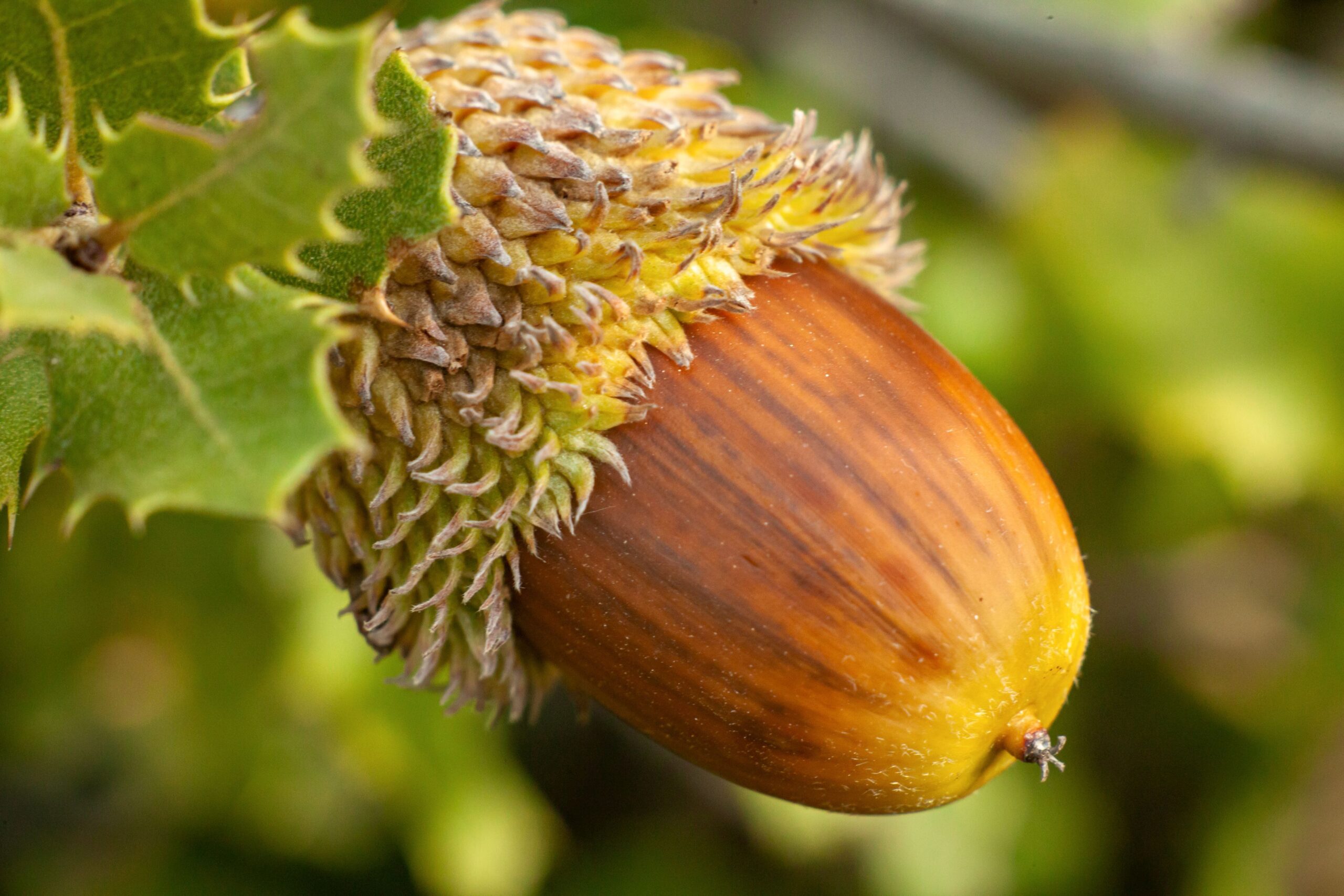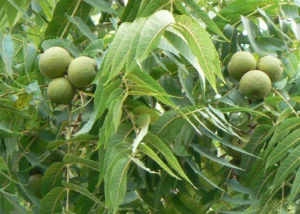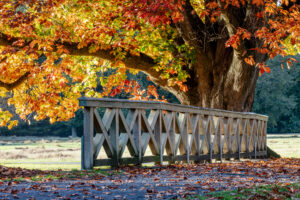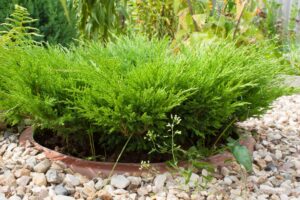Acorn Seed Trees: Growing Mighty Oaks from Tiny Seeds
Acorns are the seeds of oak trees, one of the most majestic and long-living tree species on Earth. From these small, hard seeds grow towering oak trees that can live for hundreds of years, providing food and shelter to a vast array of wildlife. The journey of growing an oak tree from an acorn is not just an exciting gardening project, but also a rewarding way to contribute to nature. In this article, we’ll explore everything you need to know about acorn seed trees, how to identify acorn seeds, the process of growing live oaks from acorns, the best time to plant acorns, and how to germinate them.
We’ll also include helpful tips and a table for reference along with answers to some frequently asked questions.
What is an Acorn?
An acorn is the nut of an oak tree (Quercus species). It’s a seed encased in a hard shell with a characteristic cap, which resembles a tiny, brown hat. Acorns are not only essential for growing oak trees but also serve as a food source for animals like squirrels, birds, and deer.
Identifying Acorn Seeds
Acorns are easy to identify once you know what to look for. These nuts have the following features:
- Shape: Acorns are oval or round in shape, with one end being slightly more pointed.
- Cap: Each acorn has a “cupule” or cap attached to its top, resembling a tiny hat that covers part of the seed.
- Color: Acorns can range in color from light green when immature to brown when fully mature.
- Size: The size of acorns can vary depending on the species of oak, ranging from small (half an inch) to larger (up to 2 inches long).
Different species of oak trees produce acorns of varying sizes and shapes, but all share these common features.
Growing Live Oaks from Acorns
One of the most exciting projects you can undertake as a gardener or nature enthusiast is growing live oak trees (Quercus virginiana) from acorns. Live oaks are magnificent trees with spreading canopies that can live for centuries. Here’s how to start the process.
Collecting Acorns for Planting
To start, you’ll need to collect acorns during autumn, typically in September to November. This is when most oak species drop their seeds. Be sure to gather acorns directly from the ground beneath healthy trees. Discard any acorns that have cracks or holes, as these are signs of insect damage or poor health.
Once you’ve collected a batch of acorns, test them for viability by placing them in a bucket of water. The healthy acorns will sink, while the unhealthy or damaged ones will float. Discard the floating acorns and proceed with the viable seeds.
How to Germinate Acorn Seeds
To germinate acorn seeds, you’ll need to follow these steps:
- Cold Stratification: Acorns need to experience a period of cold before they germinate. Place your acorns in a plastic bag with damp peat moss or sawdust, then store the bag in the refrigerator for about 6 to 8 weeks. This simulates the natural winter conditions they would experience outdoors.
- Planting: After the cold stratification period, plant the acorns in pots with loose, well-draining soil. Plant each acorn about 1 to 2 inches deep, with the pointed end facing down. Water the soil thoroughly.
- Keep Warm and Watered: Keep the planted acorns in a warm location, and water regularly to ensure the soil stays moist. Germination can take anywhere from 2 to 8 weeks, depending on the species and growing conditions.
- Transplanting: Once the seedlings have grown a few inches tall and developed several leaves, they can be transplanted into a larger pot or directly into the ground. Choose a spot with plenty of sunlight and room for the tree to grow.
Starting Oak Trees from Acorns
Growing oak trees from acorns is a relatively simple process if you follow the correct steps:
- Choose the Right Acorns: Collect acorns from healthy trees in the fall.
- Prepare the Acorns: Stratify them to mimic winter conditions.
- Plant in Pots: Use pots or containers with well-draining soil.
- Monitor Growth: Keep the soil moist and wait for germination.
- Transplant to Garden: Once the seedlings are strong enough, plant them in your garden or yard.
Best Time to Plant Acorns
The best time to plant acorns is in the fall after they’ve matured and fallen from the tree. If you’re starting the germination process indoors, you can plant them in pots at any time after they’ve been stratified. However, if you’re planting them directly into the ground, it’s best to do so in late fall or early winter. This allows the acorns to establish roots before the growing season begins in spring.
Acorn Seed Germination Table
| Step | Details |
|---|---|
| Collecting Acorns | Autumn (September-November) |
| Viability Test | Place in water (sink = viable) |
| Cold Stratification | 6-8 weeks in refrigerator |
| Planting Depth | 1-2 inches deep in pots |
| Germination Time | 2-8 weeks (species-dependent) |
| Transplanting Time | When seedlings are a few inches tall |
How to Start Acorn Seeds: Step-by-Step Guide
Starting acorn seeds requires some preparation but is a straightforward process if done correctly. Here’s a detailed guide on how to start your own oak tree from acorn seeds:
- Collect Acorns: In fall, gather acorns from beneath mature oak trees. Make sure they are free from cracks and damage.
- Soak in Water: Soak the acorns in water for 24 hours to separate the viable ones. Viable acorns will sink, while non-viable ones float.
- Cold Stratification: For best results, place the viable acorns in a damp bag with peat moss or sand and refrigerate them for 6-8 weeks.
- Plant in Pots: Fill pots with well-draining soil, and plant the acorns 1-2 inches deep. Keep them indoors or in a protected area during winter.
- Germination: Water the soil regularly and ensure the pots are in a warm, sunny spot. Germination will occur in 2-8 weeks.
- Transplanting: Once the seedlings have a few true leaves, they are ready to be transplanted to a larger pot or into the ground.
White Oak Tree (Quercus alba)
The White Oak Tree (Quercus alba) is a majestic, long-living species native to eastern and central North America. Known for its towering height and wide-reaching canopy, it can grow up to 100 feet tall and spread just as wide. White oaks are revered for their longevity, often living for several centuries, with some specimens reaching over 600 years old.
One of the standout features of the white oak is its bark, which has a light grayish hue that becomes deeply furrowed with age. Its leaves are lobed with rounded tips, turning a striking red or burgundy in the fall, making it a popular choice for ornamental planting. The acorns of the white oak are relatively large, taking about a year to mature and serving as an essential food source for wildlife like deer, squirrels, and birds.
White oak wood is highly prized for its strength and durability. It is used in furniture making, flooring, barrels, and shipbuilding. Due to its water-resistant properties, white oak wood is also commonly used for making barrels to age wine and whiskey.
When growing white oak trees, it’s crucial to provide full sunlight and well-drained, slightly acidic soils. While it is drought-tolerant once established, white oaks prefer moist conditions during their early years. These trees are highly beneficial for wildlife and are considered keystone species in many forest ecosystems.
English Oak Tree (Quercus robur)
The English Oak Tree (Quercus robur) is a sturdy, long-lived species native to Europe but widely cultivated across the United States. It can grow up to 100 feet tall, with a broad, rounded crown that offers excellent shade. The English oak is recognizable by its lobed, dark green leaves with rounded tips and its characteristic acorns, which are longer and narrower than those of most other oak species.
English oaks are revered for their historical and cultural significance, often symbolizing strength, endurance, and longevity. In fact, some English oaks are known to live for over 1,000 years. The wood from these trees is prized for its density and strength, making it highly sought after for construction, shipbuilding, and fine furniture.
In terms of habitat, English oaks thrive in full sunlight and well-drained soils. They are tolerant of various soil types, from sandy to clay, though they prefer slightly alkaline conditions. The acorns produced by English oaks are a favorite among many wildlife species, including squirrels, birds, and deer.
One unique aspect of English oak is its ability to develop a symbiotic relationship with fungi in the soil, particularly truffles, which grow near the tree’s roots. This connection helps the tree absorb essential nutrients and water, further boosting its growth and health.
Shumard Oak Tree (Quercus shumardii)
The Shumard Oak Tree (Quercus shumardii) is a fast-growing, deciduous tree native to the southeastern and central United States. It is known for its impressive height, often reaching 60 to 80 feet, with a broad, open canopy. Shumard oaks are highly valued in urban landscaping due to their rapid growth, aesthetic appeal, and adaptability to a wide range of soil conditions.
Shumard oaks have dark green, lobed leaves that turn vibrant shades of red and orange in the fall, providing a striking display of color. The bark is smooth and gray when young, becoming darker and ridged as the tree matures. The acorns of the Shumard oak are relatively large and serve as a food source for various wildlife, including squirrels, turkeys, and deer.
This oak species thrives in full sunlight and can tolerate both dry and moist soil conditions. It prefers well-drained, slightly acidic soils but can adapt to clay or sandy soils. Shumard oaks are drought-tolerant once established and are resistant to many common oak diseases, making them an excellent choice for residential and urban environments.
The wood of the Shumard oak is strong and durable, often used in cabinetry, furniture, and flooring. Its fast growth and hardiness make it a popular choice for restoration projects and wildlife habitats.
Pin Oak Tree (Quercus palustris)
The Pin Oak Tree (Quercus palustris) is a medium-sized deciduous tree native to the central and eastern United States. It typically grows to a height of 50 to 70 feet and is known for its straight trunk and pyramidal shape, making it a popular choice for ornamental planting. Pin oaks are often found in low-lying, swampy areas, as they can tolerate wet soils better than many other oak species.
Pin oak leaves are deeply lobed with pointed tips, and they turn a brilliant red or bronze color in the fall. The acorns of pin oaks are small and round, providing food for wildlife such as ducks, turkeys, and squirrels. The bark is smooth and grayish-brown when young, becoming ridged and darker with age.
Pin oaks prefer full sunlight and are adaptable to various soil types, though they perform best in slightly acidic, well-drained soils. They are commonly used in urban landscapes because of their tolerance to pollution and compact spaces. However, they are sensitive to iron deficiencies in alkaline soils, which can cause chlorosis (yellowing of the leaves).
The wood of the pin oak is not as valuable commercially as other oaks due to its tendency to warp, but it is still used for fuel, fencing, and rough construction.
Bur Oak Tree (Quercus macrocarpa)
The Bur Oak Tree (Quercus macrocarpa) is a massive, slow-growing tree native to North America. It is one of the most cold-hardy oaks, making it a popular choice for landscaping in colder regions. Bur oaks can grow up to 100 feet tall, with a wide-spreading crown that provides ample shade. The tree is named for its large acorns, which have a fringed, burr-like cap.
Bur oak leaves are large, with deep lobes, and they turn yellow or brown in the fall. The bark is thick and deeply furrowed, providing excellent protection against wildfires, making bur oaks an important species in prairie ecosystems. The large acorns are a significant food source for wildlife, including squirrels, deer, and turkeys.
Bur oaks are highly adaptable and can thrive in a range of soil conditions, from dry and sandy to heavy clay. They are drought-tolerant once established, but they also tolerate occasional flooding, making them suitable for various habitats. These trees are long-lived, often surviving for hundreds of years.
The wood of bur oaks is strong and durable, commonly used for furniture, flooring, and fencing. Its resilience and longevity make it a valuable species for ecological restoration projects and wildlife conservation efforts.
Willow Oak Tree (Quercus phellos)
The Willow Oak Tree (Quercus phellos) is a medium to large deciduous tree native to the southeastern United States. It is named for its slender, lance-shaped leaves, which resemble those of a willow tree. Willow oaks typically grow to a height of 50 to 80 feet and are known for their fast growth and symmetrical shape, making them a popular choice for urban and residential landscaping.
Willow oaks produce small, round acorns that are a favorite food of wildlife, including birds, squirrels, and deer. The bark is smooth and gray when young, becoming ridged and darker as the tree matures. The leaves turn a rich golden-yellow color in the fall, adding to the tree’s ornamental appeal.
Willow oaks thrive in full sunlight and are highly adaptable to various soil types, from wet, swampy conditions to dry, well-drained soils. They are tolerant of urban pollution, making them an ideal choice for city parks and street plantings. These trees also have a relatively long lifespan, often living for over 100 years.
The wood of willow oaks is not as commercially valuable as other oak species, but it is used for general construction, fuel, and pulpwood. The tree’s rapid growth and ability to withstand harsh conditions make it an excellent choice for erosion control and reforestation projects.
Northern Red Oak Tree (Quercus rubra)
The Northern Red Oak Tree (Quercus rubra) is a large, fast-growing deciduous tree native to eastern and central North America. It typically reaches heights of 60 to 90 feet, with a broad, rounded canopy. The tree’s bark is dark gray to black and deeply furrowed with distinctive ridges, while its leaves are lobed with pointed tips and turn a brilliant red in the fall.
One of the most significant features of the Northern Red Oak is its adaptability to different soil types. It thrives in moist, well-drained, slightly acidic soils but can also grow in clay or rocky soils. This resilience makes it a popular choice for urban and residential landscapes.
The acorns of the Northern Red Oak take two years to mature and serve as a crucial food source for wildlife, including squirrels, deer, and various bird species. These acorns are smaller than those of white oaks but are still abundant, helping to support many animals in forest ecosystems.
The wood of the Northern Red Oak is highly valued in the timber industry. Its hardness and durability make it ideal for furniture, flooring, and cabinetry. Additionally, the tree is known for its shade, making it a favored choice for parks, gardens, and city streets.
Southern Live Oak Tree (Quercus virginiana)
The Southern Live Oak Tree (Quercus virginiana) is an iconic species native to the southeastern United States. Known for its wide, spreading branches and thick trunk, it can grow up to 80 feet tall with a canopy that extends even wider. Southern live oaks are evergreen, with leathery, dark green leaves that remain on the tree year-round, making them an excellent choice for shade.
One of the distinguishing features of the Southern Live Oak is its longevity, with many specimens living for several hundred years. It’s a symbol of strength and endurance in southern landscapes, often associated with historical and cultural landmarks.
Southern live oaks thrive in coastal regions, where they tolerate salt spray and sandy soils. They prefer well-drained soils but can also withstand occasional flooding. The tree produces small acorns that are vital for local wildlife, particularly birds and mammals like squirrels.
In landscaping, Southern live oaks are prized for their beauty and resilience. They provide dense shade and are often planted in large gardens, parks, and along streets. Their wood, though heavy and difficult to work with, is used in construction and shipbuilding.
Scarlet Oak Tree (Quercus coccinea)
The Scarlet Oak Tree (Quercus coccinea) is a medium-sized deciduous oak known for its stunning fall color. Native to eastern North America, it typically grows to heights of 60 to 80 feet with a broad, rounded canopy. Its leaves are deeply lobed with pointed tips, turning a brilliant scarlet red in autumn, making it a popular choice for ornamental planting.
Scarlet oaks prefer dry, well-drained soils and thrive in full sunlight. They are commonly found on ridges, hillsides, and upland forests. The tree’s bark is dark gray and becomes more deeply ridged with age. Its acorns are small and serve as a food source for various wildlife, including birds and small mammals.
Due to its vibrant fall color, the Scarlet Oak is often used in landscaping for parks, gardens, and street plantings. It is also relatively drought-tolerant, making it suitable for dry sites.
The wood of the Scarlet Oak is used for general construction, furniture, and flooring. Although not as valuable as other oak species, it is still a significant source of timber in its native range.
Southern Red Oak Tree (Quercus falcata)
The Southern Red Oak Tree (Quercus falcata), also known as Spanish oak, is native to the southeastern United States. It is a fast-growing, medium to large deciduous tree, reaching heights of 60 to 80 feet. Southern red oaks are known for their large, lobed leaves, which turn reddish-brown in the fall. The tree’s bark is dark gray and becomes rough and furrowed as it ages.
Southern red oaks thrive in dry, sandy, or clay soils and are commonly found in upland forests. They are drought-tolerant and can survive in poor soil conditions, making them a hardy choice for urban landscapes.
The acorns of the Southern Red Oak are relatively small and take two years to mature. They are an important food source for local wildlife, including squirrels, deer, and birds.
Southern red oak wood is used in construction, furniture making, and flooring. Its fast growth and adaptability make it a popular choice for reforestation and erosion control projects.
Black Oak Tree (Quercus velutina)
The Black Oak Tree (Quercus velutina) is a large deciduous tree native to eastern and central North America. It typically grows to heights of 50 to 80 feet, with a broad, rounded canopy. Black oaks are known for their dark, rough bark and deep-lobed leaves, which turn shades of red, orange, or yellow in the fall.
Black oaks prefer dry, well-drained soils and are commonly found on ridges and hillsides. The tree is relatively drought-tolerant and thrives in full sunlight. Its acorns are small and take two years to mature, serving as a vital food source for wildlife.
The wood of the Black Oak is used in construction, furniture, and flooring. However, it is not as highly valued as the wood of white oaks due to its tendency to warp. Despite this, black oaks play an essential role in forest ecosystems, supporting wildlife and stabilizing soils.
Chinquapin Oak Tree (Quercus muehlenbergii)
The Chinquapin Oak Tree (Quercus muehlenbergii) is a medium-sized deciduous oak native to eastern and central North America. It typically grows to heights of 40 to 60 feet, with a broad, rounded canopy. Chinquapin oaks are known for their unique, saw-toothed leaves, which resemble those of the chestnut tree. In the fall, the leaves turn a golden yellow color.
Chinquapin oaks prefer well-drained, limestone-rich soils and thrive in full sunlight. They are commonly found on limestone outcrops and rocky hillsides. The tree’s bark is light gray and becomes rough and scaly with age.
The acorns of the Chinquapin Oak are relatively small and sweet, making them a favorite food for wildlife, including squirrels, birds, and deer.
Chinquapin oak wood is strong and durable, making it ideal for construction, furniture, and flooring. The tree’s fast growth and adaptability make it a popular choice for reforestation and wildlife habitat projects.
Frequently Asked Questions (FAQs)
Here are some common questions about growing oak trees from acorns and their concise answers:
- How do I identify acorn seeds?
Acorn seeds are round or oval-shaped nuts with a cap on top. They vary in size, but all acorns have a hard shell and a characteristic cupule (cap). - What is the best time to plant acorns?
The best time to plant acorns is in the fall after they’ve matured and fallen from the tree. Planting during this time allows the acorns to naturally cold-stratify over winter. - How do I start oak trees from acorns?
To start oak trees from acorns, collect viable acorns, stratify them in a refrigerator for 6-8 weeks, then plant them in pots with well-draining soil and water regularly. - How long do acorns take to germinate?
Acorns can take anywhere from 2 to 8 weeks to germinate, depending on the species and growing conditions. - Can I plant acorns directly in the ground?
Yes, you can plant acorns directly in the ground in late fall or early winter. However, starting them in pots offers more control over germination. - How should I care for oak seedlings?
Oak seedlings require plenty of sunlight, well-drained soil, and regular watering. Once they’re established, they can thrive with minimal care. - What is cold stratification?
Cold stratification is the process of mimicking winter conditions by storing seeds in a cool, moist environment. This helps break seed dormancy and encourages germination. - How deep should I plant acorns?
Acorns should be planted 1-2 inches deep in well-draining soil, with the pointed end facing down. - Do all oak trees produce acorns?
Yes, all species of oak trees produce acorns, though the size, shape, and timing of acorn production vary depending on the species. - How can I ensure my acorns are healthy for planting?
Soak acorns in water for 24 hours. Healthy acorns will sink, while damaged or diseased ones will float. Only plant the healthy, viable acorns.






